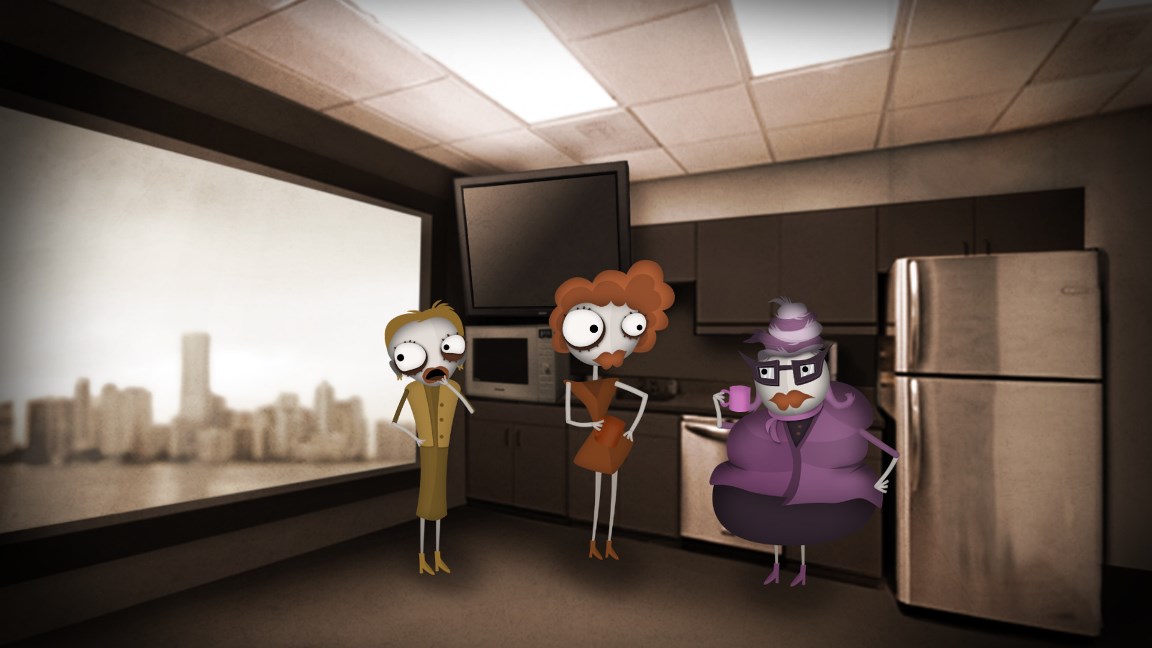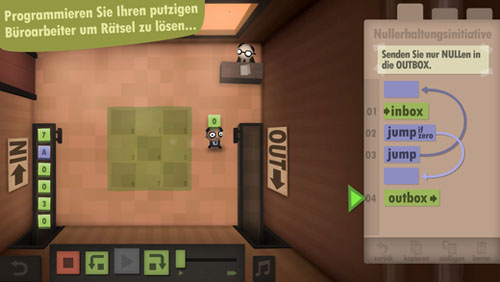
Sure, it might be the ultimate joke, reflecting on just how banal and meaningless careers at these ‘mega-corps’ may be, but when you compare it to something like Little Inferno or World of Goo, it does seem to fall short in comparison. The presentation is solid, using the same dark colors and characters from past Tomorrow Corporation games, but once you finish the final level, the game offers up a brief cutscene, and then it’s all over. If there’s one area where the game falters, it would most definitely be the story.
#Human resource machine year 32 code#
It’s not only a novel way to extend the lifespan of the game (which is a few hours long), but reinforces the idea that clean code is the best code. A speed challenge monitors how many steps have to be taken in order to execute your code, while a command challenge demands that you optimize your code to consist of only so many lines. The developers smartly capitalized on the concept of optimization, as each level has two additional challenges outside of the main task at hand. Storing that value to the side, I continued doubling the number until I reached 32 times the original value, after which I added that octupled number, which took me to 40. Eventually, an elegant solution dawned on me, which involved adding the number to itself (doubling) until I reached eight times the original value.

Now, the obvious answer would be to simply add the given number to itself 39 times, and granted, this would work just fine, though with the lack of more nuanced loop commands, it would require the tedious process of writing out the same command 39 times. It’s not too different from procedural programming languages such as Fortran or Pascal, and once you get a handle for it there’s a lot of fun to be had in tinkering around with the coding tools at your disposal. ‘Copy to’ and ‘copy from’ functions allow for reading and writing to and from memory, and you can set up simple loops with the jump command. Commands such as ‘inbox’ and ‘outbox’ stand in ‘input’ and ‘output’, while add and sub allow for simple addition and subtraction. Things start off easily enough early challenges might require you to add a few numbers together before outputting the result, or take two numbers and only output the larger. By using a small set of commands, you can control your workplace minion, as he or she completes each level, with each level being represented as one year worked at the fictional mega-corporation that employs you. Rather than focusing on more in-depth topics that go hand-in-hand with something like object-oriented programming, the game keeps things simple. We can speed up the program even further by eliminating the first jump and adding some redundant code.I’m inherently a fan of any game that allows you to tinker with the coding and the inner workings of a game’s mechanics, and Human Resource Machine strips coding down to a few very simple concepts and tools. We can remove one jump to optimize size further : Now you can eliminate the JUMP that used to be below the COPYFROM 4 when it was at the top.

Likewise, move the third JUMP IF NEGATIVE to just above the newly moved COPYFROM 4. From there, we'll jump back to the OUTBOX. To do this, we'll bring the COPYFROM 4 instruction down from the top and drop it in below the second JUMP IF NEGATIVE. In particular, the jump up to COPYFROM 4 and then another jump down to OUTBOX is slightly inefficient (although not incredibly so.) Never the less, it is possible to rearrange some of the instructions so that you can remove at least one JUMP command. The trick here again is to cut back on the number of jumps you need to make. It may feel as though everything that's there needs to be there in order for the program to work, so how can you remove anything? Intuitively carving an instruction out of the above program is not easy. The above solution is pretty well optimized, and it will meet the speed challenge of the level, but it won't meet the size challenge.

Turning that into a program looks like so: Now when you detect two numbers that are the same, you'll jump up above the COPYFROM 4, and when you detect two numbers that are different, you'll jump up above the COPYFROM 5.įor the rest of the program, you'll want to create a branching path that resembles the following decision tree:

So to start, let's just setup the OUTBOX portion of the code. You'll be using those as the values that you'll ultimately place in the OUTBOX. For the first time in a while, the boxes on the floor come pre-loaded with a set of values.


 0 kommentar(er)
0 kommentar(er)
